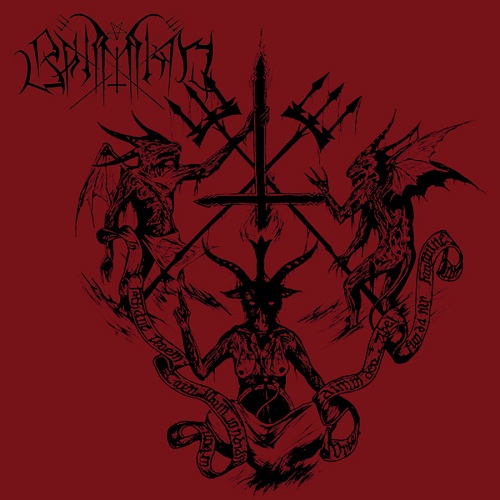From the outside, Bahimiron looks like
your average bestial black metal group hailing from the States. No
big expectations musically. This is why it was eventually great to
hear their newest effort Rebel Hymns of Left Handed Terror and
realize that there's more going on than just effortless imitation of
Blasphemy. Although the aforementioned band shines as an evident (and
probably the most important) influence here, the elements of bestial
black metal are brought forth into a heavily atmospheric soundscape:
Rebel Hymns of Left Handed Terror revels in brooding, droning
atmospheres, and this is the distinct feature that makes it differ
from the heaps of clones.
I don't think there's much catchiness
in any part of the album, but the band has probably not even aimed at
that: it kind of reveals it already that some of these song almost
reach the mark of nine minutes. Think of a deranged, maximally
Satanic death / black metal album in the vein of Teitanblood's Seven
Chalices and you're on the right track, in practice meaning as evil
riffs as possible with varying tempos ranging from the raucous blast
beats to slower heaviness. Inhuman grunts and rasps dominate the
picture on top of everything. Production-wise, Rebel Hymns of Left
Handed Terror is fittingly lo-fi and natural sounding, though it
could use a punch to make it more dynamic and effective.
I'm not so keen on the overall length
of the album as I'm slowly losing interest of the familiar paradigm
around the sixth track already, so perhaps an EP length would have
server yours truly better. The last track on the album does differ a
bit though, being a messy noise conclusion that admittedly works
nicely. Rebel Hymns of Left Handed Terror is a successful piece of
dark atmospheres that does have some glitches, but is nonetheless
worth recommending to those who prefer the slowly growing style of
bestial black death laden with a lot of ambience (Wrathprayer, Nocturnal Blood and the likes).
3 / 5






